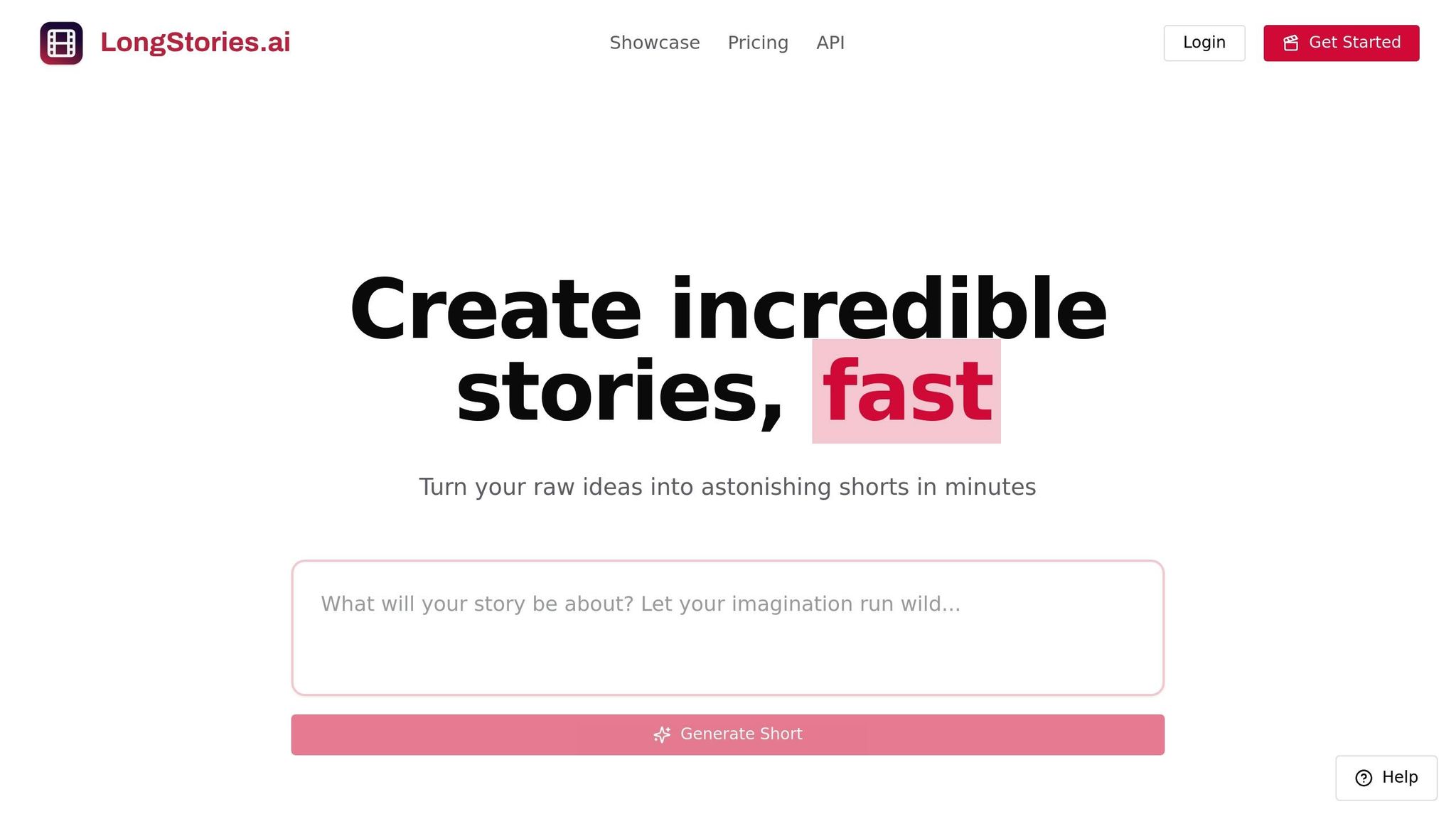
LongStories is constantly evolving as it finds its product-market fit. Features, pricing, and offerings are continuously being refined and updated. The information in this blog post reflects our understanding at the time of writing. Please always check LongStories.ai for the latest information about our products, features, and pricing, or contact us directly for the most current details.
Interactive Onboarding Videos: Common Challenges and Fixes
Interactive onboarding videos can improve employee training with 60% better knowledge retention, 90% completion rates, and 33% less training time. However, creating effective videos comes with challenges like:
- Technical Barriers: Non-technical users struggle with interactive features and mobile optimization.
- Engagement Issues: Viewers often drop off in long or poorly structured videos.
- Accessibility: Only 22% of corporate training videos meet WCAG 2.1 AA standards.
- Localization: Managing translations and cultural relevance for global teams is complex.
- Performance Tracking: Measuring metrics like completion rates and engagement is essential but often overlooked.
Quick Solutions:
- Use AI tools for easy interactivity and analytics.
- Break content into 3-5 minute segments with quizzes and branching paths.
- Add captions, transcripts, and audio descriptions for accessibility.
- Use cloud platforms for centralized localization and collaboration.
- Track metrics like drop-off points and interactive clicks to improve effectiveness.
These strategies help organizations streamline onboarding, reduce costs, and improve outcomes.
Related video from YouTube
5 Main Problems When Making Interactive Onboarding Videos
Creating interactive onboarding videos can be tricky. Organizations often face several challenges that can affect how effective these tools are. Let’s break down the main issues.
Technical Barriers for Non-Technical Users
Non-technical users often hit roadblocks when trying to:
- Add interactive features like quizzes or hotspots
- Work with third-party tools
- Ensure videos work well on mobile devices
- Keep file sizes manageable for smooth playback
These challenges underline the importance of user-friendly tools for video creation.
Viewer Drop-off in Long Videos
Keeping viewers engaged is tough. Common drop-off points include:
- First 30 seconds: Weak introductions fail to grab attention
- 2-3 minutes: Lack of interactions can make viewers lose interest
- 10+ minutes: Long content leads to fatigue
This highlights the need to structure content thoughtfully to maintain engagement.
Meeting Accessibility Standards
According to a 2023 report by the Web Accessibility Initiative, only 22% of corporate training videos comply with WCAG 2.1 AA standards. To meet accessibility requirements, videos should include:
- Clear closed captions and transcripts
- Navigation that works with keyboards
- Compatibility with screen readers
- High-contrast colors for interactive elements
- Audio descriptions for visual content
Managing Content for Global Teams
Creating videos for international teams comes with its own set of challenges, such as:
- Ensuring accurate translations across multiple languages
- Adjusting examples and references for cultural relevance
- Meeting regional compliance rules
- Keeping track of different language versions
Measuring Video Performance
To improve onboarding videos, it’s important to track key metrics like:
- Completion rates: Show how engaging the video is
- Interactive clicks: Measure participation
- Assessment scores: Reflect knowledge retention
- Skill acquisition speed: Gauge training effectiveness
A study by the Brandon Hall Group found that companies using data analytics in learning programs are twice as likely to boost productivity.
sbb-itb-94859ad
Solutions to Common Interactive Video Problems
Using AI Tools to Add Interactivity
Modern AI-powered platforms have made it much easier to create interactive onboarding videos. These tools simplify the process by offering user-friendly features like drag-and-drop interfaces, so you can add elements such as quizzes and branching scenarios without needing coding skills. For example, platforms like LongStories.ai make it possible to integrate these features seamlessly.
Additionally, AI can analyze viewer engagement data to recommend the best spots for interactive elements, making the learning process more engaging and effective.
Breaking Content into Smaller Segments
Keep your videos concise by creating 3-5 minute microlearning segments. Use these strategies to keep viewers engaged:
- Progressive disclosure: Gradually present information in short, digestible chunks.
- Interactive checkpoints: Add quizzes between modules to reinforce key concepts.
- Branching scenarios: Allow viewers to select role-specific paths tailored to their needs.
This method reduces information overload and encourages active participation.
Adding Accessibility Features
To meet WCAG standards and ensure inclusive content, incorporate these accessibility features:
1. Caption Implementation
Make sure captions are:
- Synced with the audio.
- Formatted for easy readability.
- Double-checked for accuracy.
2. Audio Descriptions
Provide clear narrations for visual content, ensuring they align with WCAG 2.1 AA standards. These descriptions should be timed to match the relevant visuals.
Using Cloud Tools for Global Teams
Cloud-based platforms are perfect for handling localization challenges. They offer:
- Centralized management for all language versions.
- Automated translation workflows to simplify updates.
- Tools for collaborative editing across different time zones.
- Reliable global playback through adaptive streaming.
Setting Up Video Analytics
To measure the success of your onboarding videos, track these key metrics:
| Metric | What It Measures | Why It Matters |
|---|---|---|
| View-through Rate | How many viewers finish | Shows overall engagement levels. |
| Drop-off Points | Where viewers stop watching | Pinpoints areas needing improvement. |
| Interactive Element Usage | Quiz completion rates | Indicates how well users are learning. |
How to Select Video Creation Software
Once you've tackled the main challenges, picking the right video creation software becomes crucial. Look for software that provides the following:
Key Interactive Features
- Tools for tracking progress
- Integration options with other systems
- Compatibility with mobile devices
- Support for various video formats
Technical Considerations
- Seamless integration with Learning Management Systems (LMS)
- Mobile-friendly playback for flexibility
- Multi-format video support for broader usability
| Feature | Business Benefit |
|---|---|
| Analytics Dashboard | Tracks ROI effectively |
| LMS Integration | Reduces admin workload |
| Accessibility Tools | Helps meet compliance |
| Multi-language Support | Assists global teams |
Example: Leveraging LongStories.ai

Platforms like LongStories.ai take AI-powered video creation to the next level, offering features tailored for enterprise needs:
Efficiency-Boosting Features
- Ready-to-use templates for onboarding
- Automated voice-over creation in multiple languages
- Tools for brand-specific customization
Technical Benefits
- API access paired with detailed engagement analytics
- Performance tracking aligned with earlier metrics frameworks
- Cloud-based tools for team collaboration
The Pro plan includes:
- Custom music and voice options
- Advanced analytics capabilities
- Priority customer support
- High-capacity API access
Interactive video platforms like these have shown tangible results, including faster onboarding processes and reduced costs.
Conclusion: Creating Effective Interactive Onboarding Videos
Organizations can improve their onboarding processes by addressing common challenges with practical solutions. Implementing these strategies can lead to measurable improvements in outcomes.
To make onboarding videos more impactful, focus on these three key tactics:
Keep Videos Short and Engaging
Videos that are 3-5 minutes long are ideal for retaining knowledge. Adding interactive features like quizzes helps keep learners actively involved.
Use AI Tools for Efficiency
AI-based platforms simplify video creation and provide analytics to measure performance. These tools allow teams to produce high-quality content without needing advanced technical skills.
Prioritize Accessibility for a Global Audience
Cloud-based tools that support multiple languages and regional preferences ensure your content reaches a broader audience.
| Metric | Impact |
|---|---|
| Employee Retention | 69% higher retention over 3 years |
| Time-to-Productivity | Reduced by up to 37% |
